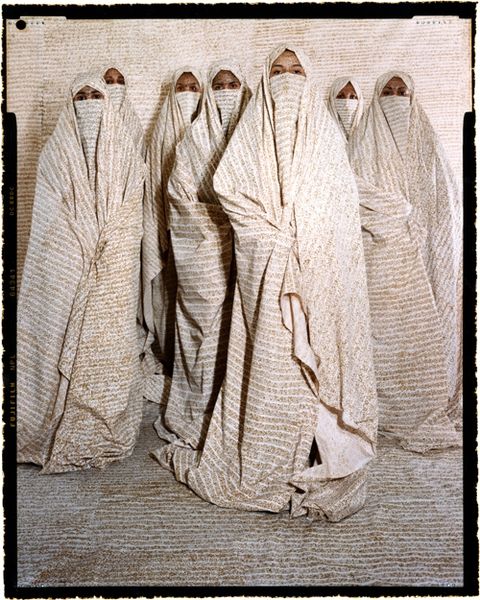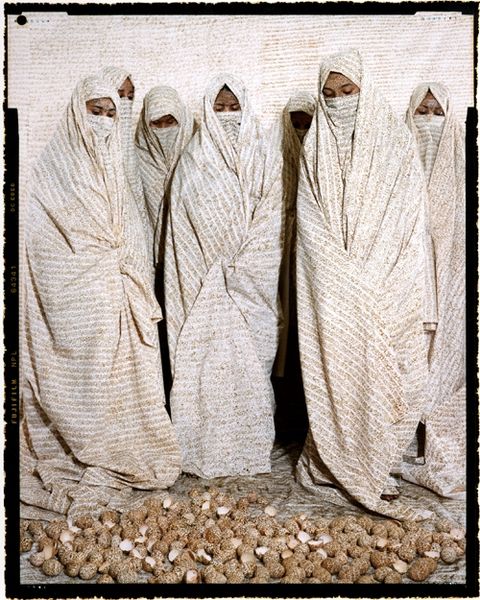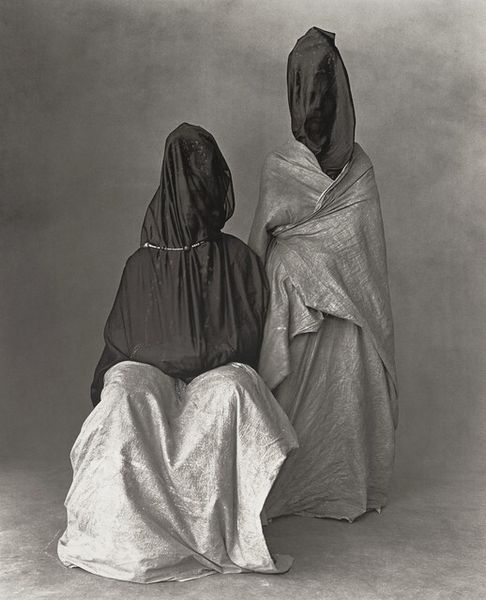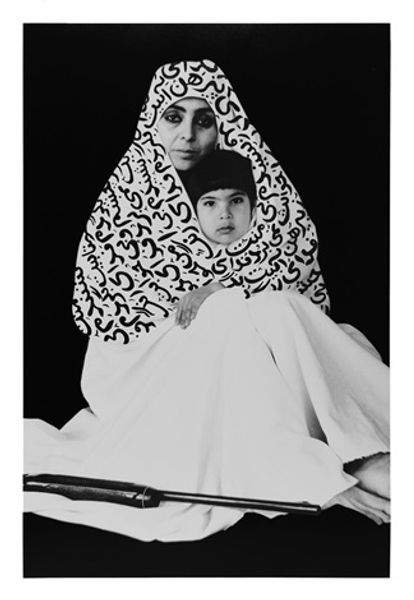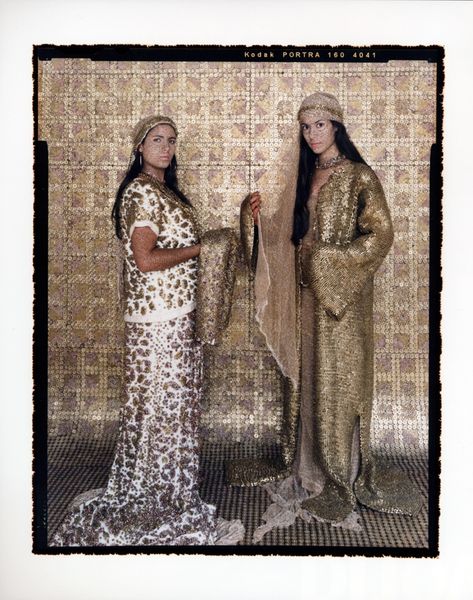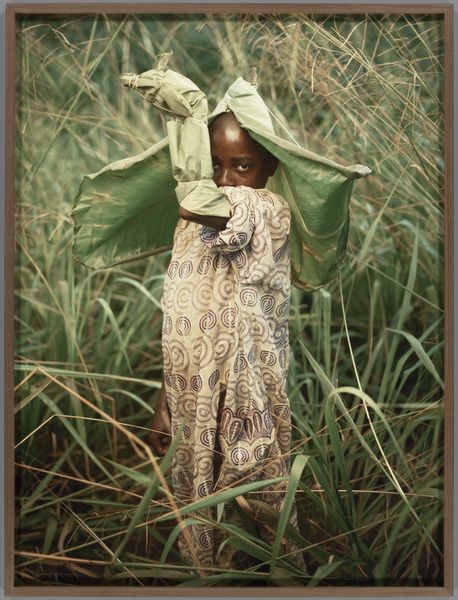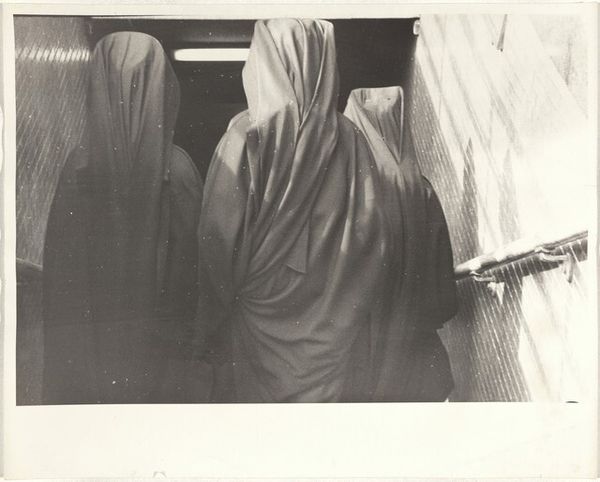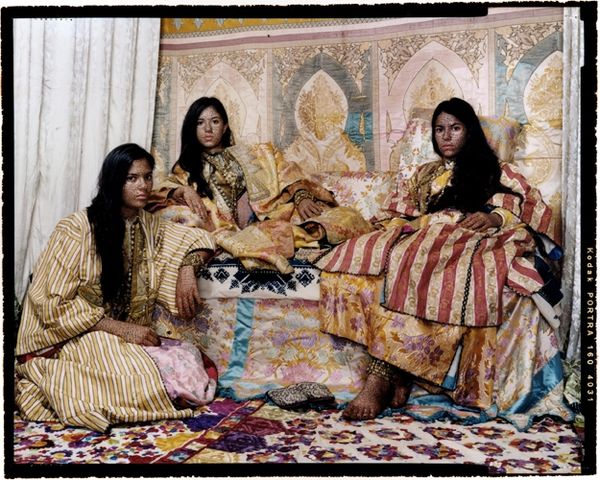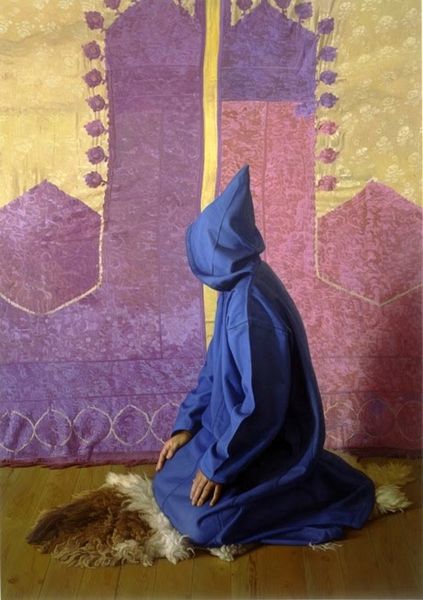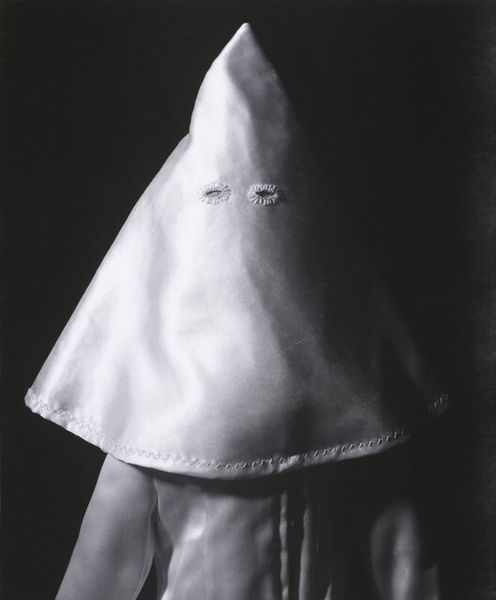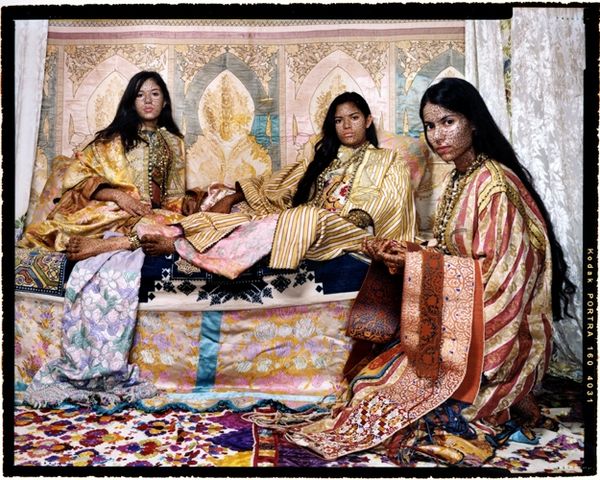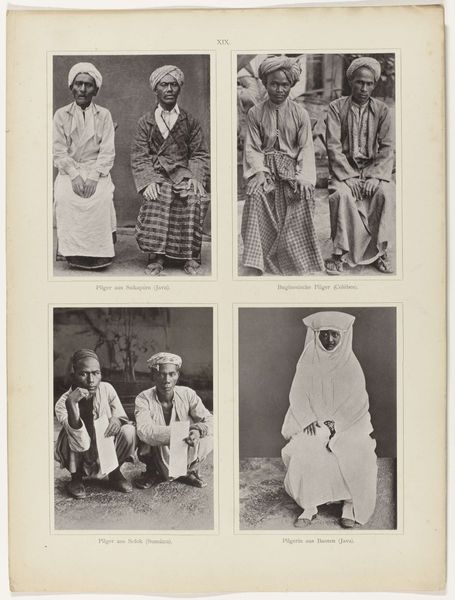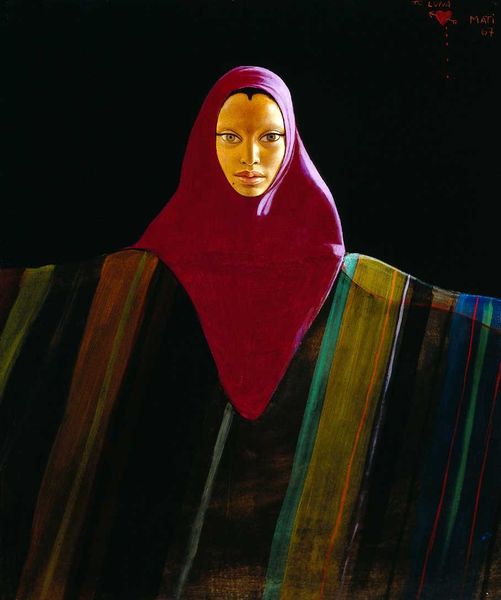
Copyright: Lalla Essaydi,Fair Use
Editor: This is Lalla Essaydi’s "Converging Territories #30" from 2004, a mixed-media piece using photography and textile elements. The subjects appear almost camouflaged, blending into the backdrop with clothing that mirrors the wall's pattern. It feels both intimate and strangely distant. How do you interpret this work? Curator: Essaydi often uses her art to challenge Western perceptions of Islamic women and the spaces they inhabit. The act of veiling, frequently viewed through a colonial lens as oppressive, is recontextualized here. Consider the women’s clothing and the backdrop, covered in what appears to be henna writing – traditionally a form of female adornment, also used to record history or keep secrets. Editor: So, it's not just about concealment, but perhaps a declaration or redefinition of identity? Curator: Exactly. Essaydi is working within and against the orientalist tradition. These women aren't simply passive figures. They are actively participating in the construction of their own image. Are they imprisoned, or are they the ones guarding the boundaries? How do you see the women in relation to the patterns that surround them? Editor: I see how they kind of push back against the stereotypes and play with the concept of hiding and revealing simultaneously. They seem empowered despite being veiled. Curator: Precisely. And Essaydi, through the convergence of photography, painting, and calligraphy, pushes us to question the assumed boundaries between tradition and modernity, private and public, oppression, and agency. Editor: It’s a lot more complex than I initially thought! This has completely changed how I understand the image. Curator: Art allows for these re-readings. Essaydi invites us to interrogate our own assumptions and engage with a richer, more nuanced understanding of identity.
Comments
No comments
Be the first to comment and join the conversation on the ultimate creative platform.
